Gamification has become increasingly popular in recent years as a way to engage and motivate learners. It has been shown to have a number of benefits for students, including improved learning outcomes, increased engagement, enhanced cognitive learning, and heightened student motivation.
While these widely recognized benefits of gamification are indeed well-known – some may even be guessed without extensive research – we aim to delve deeper into how gamification can can really impact students beyond the confines of the classroom, aiding them in applying their skills to everyday life.
This blog article delves into the lesser-known, multifaceted benefits of gamification. By doing so, it not only enriches your comprehension of gamification but also furnishes valuable insights for you to better address your students’ learning requirements.

Top 10 Lesser-Known Benefits of Gamification for Students
#1 Adaptive Learning
Some gamification platforms allow for personalized learning experiences better tailored to individual student needs and abilities. Adaptive algorithms can adjust the difficulty level of challenges or provide additional support as needed, ensuring that every student can progress at their own pace.
How to Implement with ClassPoint
Use ClassPoint to give personalized feedback and reinforcement to students during your presentation. After students submit their responses, give stars or mark with a heart to provide feedback. Try different activities and quizzes to diversify and personalise the learning experiences for your students.
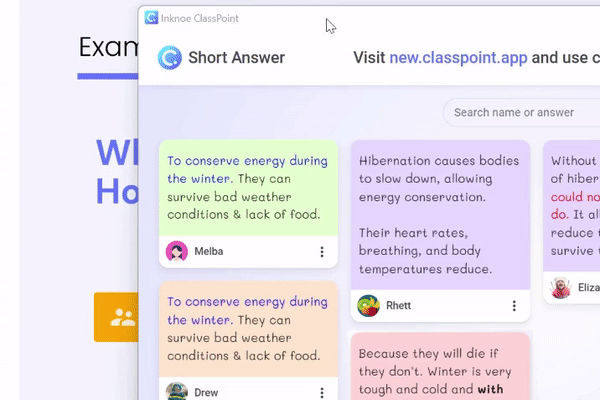
You can also use the levels and badges to assess student progress. You canassign students at the same level together to a specific task or project to encourage more optimised learning.
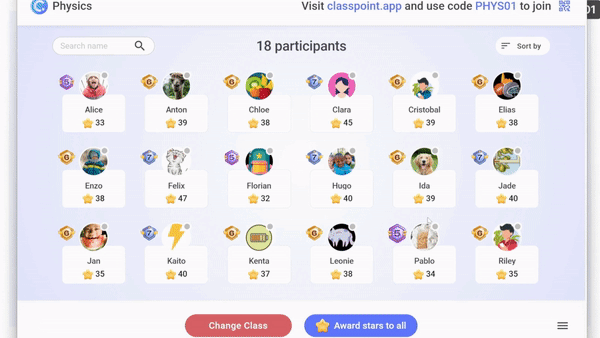
#2 Enhanced Memory Retention
By incorporating elements such as repetition, storytelling, and interactive experiences (like with AR and VR), gamification can improve memory retention. Concepts learned through gamified experiences are often better retained and recalled over time compared to traditional learning methods because of the repeated exposure and application, leading to deeper understanding and retention.
How to Implement with ClassPoint
With ClassPoint Interactive Quizzes, you can create flashcards and pop quizzes paired with awarding stars to gamify studying and learning.
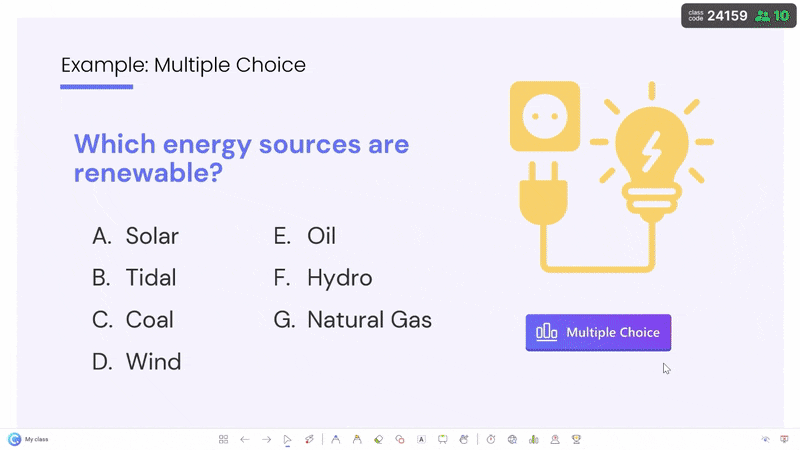
Another game to incorporate into your PowerPoint is an interactive memory game. With ClassPoint’s Draggable Objects, students can help you reveal what is hidden behind each card to find its matching pair.
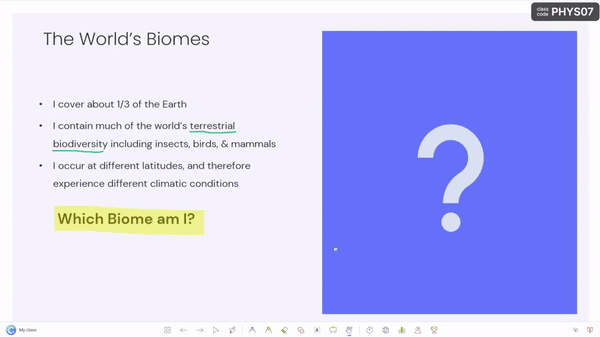
#3 Promotes Creativity
The ability to create is the highest tier in Bloom’s Taxonomy. One of the benefits of gamification is fostering creativity by providing students with opportunities to experiment, explore, and solve problems in a dynamic and interactive environment.
By presenting challenges and objectives that require creative thinking and innovative solutions, gamified learning experiences encourage students to think outside the box, collaborate with peers, and develop their own unique approaches to problem-solving. This mindset of creativity and innovation can extend beyond the classroom into students’ everyday lives.

How to Implement with ClassPoint
Create unique prompts and questions for unexpected question types. For example, instead of asking students for examples of 90-degree angles in real life using the typical word cloud or short answer question formats, try Image Upload instead to encourage thinking outside the box. Of course, don’t forget to reward your students!

Try these 30 formative assessment questions inspired by Bloom's Taxonomy.
#4 Fosters Emotional Intelligence
Through gamified scenarios, students can develop emotional intelligence by learning to recognize and manage their own emotions, as well as understanding the perspectives and feelings of others. After all, no one wants a sore loser (or winner!). With the added competition that gamification can bring, this exposes students to these feelings and appropriate ways to behave early. Plus, these skills and attitudes can lead to improved interpersonal relationships and social-emotional skills.

How to Implement with ClassPoint
Teachers can encourage a competitive yet friendly and inclusive culture in the classroom by combining innovating the ways ways you choose to award stars for students, giving everyone a chance to shine on the leaderboard.
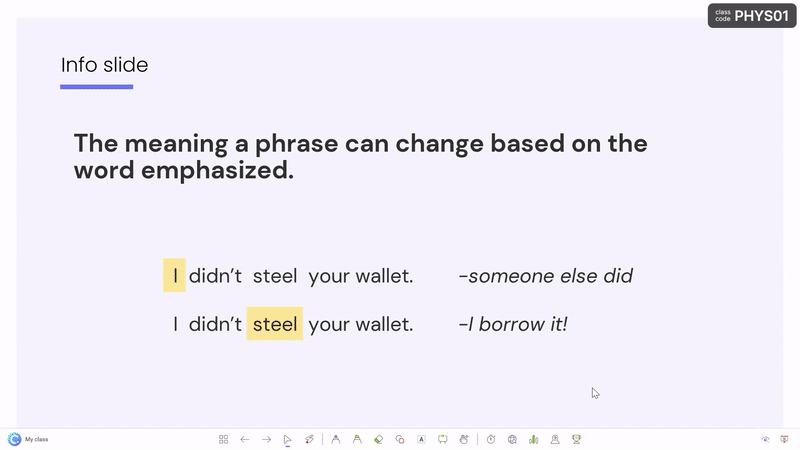
#5 Promotes Healthy Habits
Gamification can be used to promote healthy behaviors such as good study habits, regular exercises, proper nutrition, self-care, goal-oriented, and respect of classmates. By integrating elements of competition, rewards, and progress tracking into promoting these healthy habits, gamified platforms can motivate students to adopt and maintain healthy habits.
How to Implement with ClassPoint
Use ClassPoint’s presentation tools, like the embedded browser to search for examples of desirable goals or behaviours and create a customized whiteboard with trackable progress using annotation tools to encourage students to stay on track and progress in their respective goals.
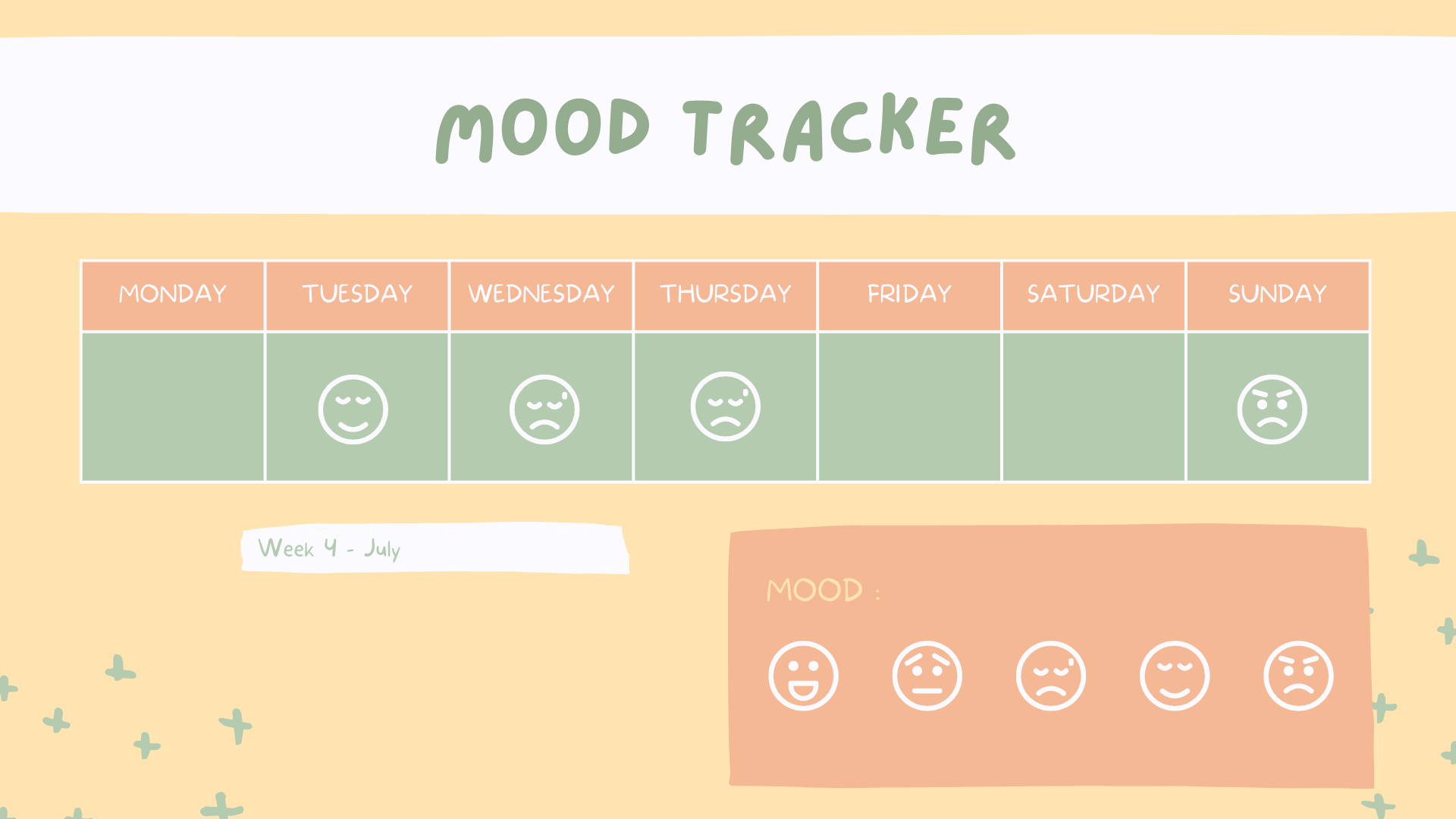
#6 Encourages Teamwork
Gamification can be used to foster teamwork skills among students of all levels. Group students together into teams for activities, quizzes or games to encourage collaboration, communication, and problem-solving. This approach not only enhances students’ teamwork skills but also cultivates a supportive learning environment where they can learn from each other’s strengths and perspectives.

How to Implement with ClassPoint
Incorporate gamification elements into game-based learning to allow new ways of learning in class! For instance, implement Wheel of Fortune, Family Feud and Jeopardy! easily in PowerPoint. Group students into teams using Name Picker or Grouping, and allow students to earn points and level up while fostering teamwork.
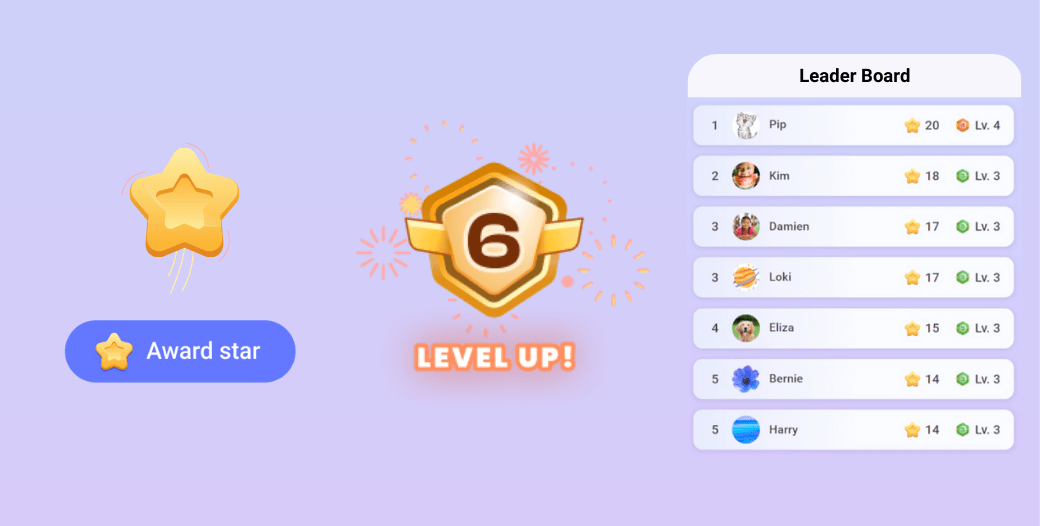
#7 Develops Digital Literacy
In an increasingly digital world, gamification helps students develop essential digital literacy and citizenship skills necessary for navigating and thriving in the digital age.
By incorporating technology into educational games and simulations, students learn to navigate online interfaces, use digital tools effectively, critically evaluate information, and practice responsible digital citizenship. This prepares them to be informed, empowered, and ethical users of technology in both academic and professional contexts.
How to Implement with ClassPoint
Digitise your classroom with ClassPoint. Invite students join your class using their devices and interact with your quizzes live. And fret not, you can easily turn your PowerPoint quizzes into games using ClassPoint tools.
#8 Instills Grit and Resilience
Another lesser known benefit of gamification is that gamification provides opportunities for students to experience failure, setbacks, and challenges in a safe and supportive environment. By presenting tasks that require perseverance, resilience, and adaptability, gamified experiences teach students the value of persistence and grit in overcoming obstacles and achieving goals, like moving up level after level. Through trial and error, students learn to bounce back from failures, adjust their strategies, and persist in the face of adversity, fostering resilience and self-efficacy.
How to Implement with ClassPoint
Remember, when adding gamification features to your classroom, you can adjust the difficulty level of your student tasks. Using ClassPoint, you can choose how many stars it takes for them to reach each level! This ability to adjust the level of difficulty ensures that your students remain motivated and engaged with achievable goals, thereby making the learning experience more effective and enjoyable.

Try automatic grading with ClassPoint's quiz mode to make learning more seamless and fun!
#9 Facilitates Continuous Learning

Gamification cultivates a love for lifelong learning and encourages students to take ownership of their education. By making learning enjoyable, engaging, and personally meaningful, gamified experiences foster intrinsic motivation and curiosity, prompting students to seek out new knowledge and skills even outside the classroom. This encourages lifelong learning and progress and prepares students for success in an ever-changing world.
How to Implement with ClassPoint
To help build a love of learning in your classroom, add a variety of questions and activities in your class to hit all learning styles. ClassPoint has 8 different quiz question types, and for verbal questions or non-BYOD classrooms, you can use the Spinning Wheel of Names to randomly select a student to participate in your classroom activities!
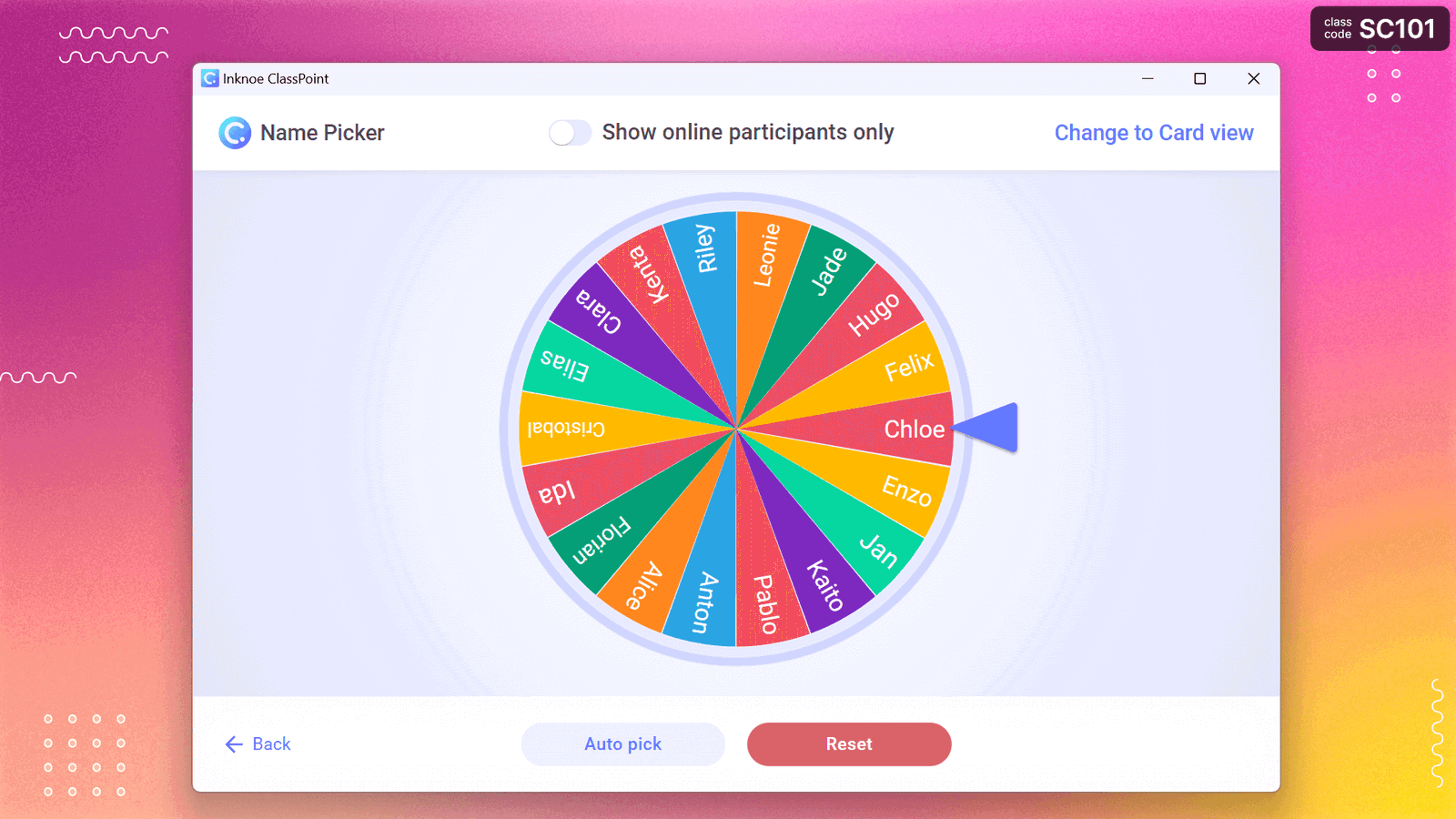
#10 Cultivates a Growth Mindset
Gamified experiences that emphasize progress, improvement, and mastery promote a growth mindset characterized by a belief in one’s ability to learn and grow through effort and practice.
By framing challenges as opportunities for learning and development rather than fixed indicators of ability, gamification encourages students to embrace challenges, persist in the face of setbacks, and view failures as valuable learning experiences. This mindset fosters resilience, persistence, and a positive attitude toward learning and personal growth!
How to Implement with ClassPoint
Help students appreciate their mistakes as learning opportunities, Insert their quiz responses as Slide in your presentation to further discuss their responses with ClassPoint’s annotation tools. Then further reward them for their participation and input. To ensure a safe learning environment, you have the option to Hide Participant names during the discussion.

Benefits of Gamification FAQs
How does gamification benefit education?
Gamification offers a wide variety of benefits to education, from enhancing student engagement, motivation, and retention, to improved performance and encouragement of lifelong learning, by transforming learning into interactive and enjoyable experiences.
Is gamification suitable for all age groups?
Gamification can be tailored to suit diverse age groups and demographics. Catering to specific preferences and skill levels with different gamification elements such as Award Stars, Levels and Badges and Leaderboard.
Are there any potential drawbacks to gamification?
While there are numerous benefits of gamification, excessive use or poorly designed gamified systems may lead to unhealthy competition, distraction, or disengagement if not implemented thoughtfully.
Can gamification improve workplace productivity too?
Gamification is a powerful tool that can positively impact student learning. It enhances students’ ability to learn effectively, encourages deeper engagement with the material, and fosters a growth mindset. By leveraging the benefits of gamification, educators can craft learning experiences that are not only enjoyable but also more memorable and effective.
Begin your gamification journey in PowerPoint with ClassPoint—the perfect way to add an extra layer of excitement to a tool you are already familiar with!
